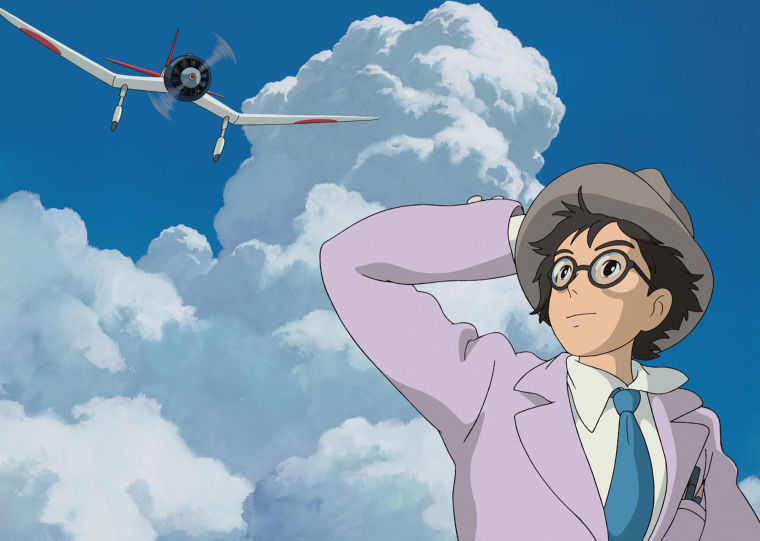
The Wind Rises (2013) / Animation-Drama
aka Kaze Tachinu
MPAA Rated: PG-13 for some disturbing images and smoking
Running Time: 126 min.Cast (voices, American version): Joseph Gordon-Levitt, John Krasinski, Emily Blunt, Martin Short, Stanley Tucci, Mandy Patinkin, Mae Whitman, Werner Kerzog, Jennifer Grey, William H. Macy, Elijah Wood
Director: Hayao Miyazaki
Screenplay: Hayao Miyazaki
Review published March 4, 2014
 Hayao Miyazaki's reported final film
(though he has already recanted this statement), the Oscar-nominated
The Wind Rises, is a mostly fictionalized biography, adapted from
Miyazaki's own earlier manga, of noted Japanese aviation
engineer Jiro Horikoshi (voiced by Joseph Gordon-Levitt,
Don Jon), who, in the first half of the 20th century, dreamt of making the world's finest
planes from an early age, following in the footsteps of his hero,
Italian aviation pioneer Gianni Caproni (Tucci,
Catching Fire). The film goes into a
two-pronged story, with one dealing with Jiro's career working as a
designer of fighter planes in the all-metal mold of Hugo Junkers'
German fleet, while the other deals with his more romantic pursuits
with Nahoko (Blunt, Looper), a girl he meets as a young man, then later marries when he
comes across her again by chance.
Hayao Miyazaki's reported final film
(though he has already recanted this statement), the Oscar-nominated
The Wind Rises, is a mostly fictionalized biography, adapted from
Miyazaki's own earlier manga, of noted Japanese aviation
engineer Jiro Horikoshi (voiced by Joseph Gordon-Levitt,
Don Jon), who, in the first half of the 20th century, dreamt of making the world's finest
planes from an early age, following in the footsteps of his hero,
Italian aviation pioneer Gianni Caproni (Tucci,
Catching Fire). The film goes into a
two-pronged story, with one dealing with Jiro's career working as a
designer of fighter planes in the all-metal mold of Hugo Junkers'
German fleet, while the other deals with his more romantic pursuits
with Nahoko (Blunt, Looper), a girl he meets as a young man, then later marries when he
comes across her again by chance.